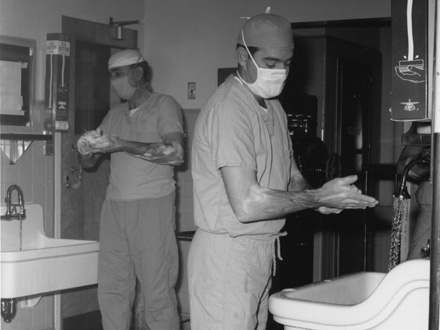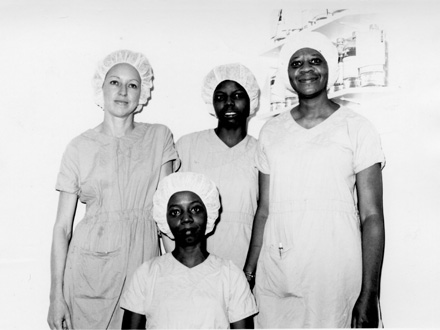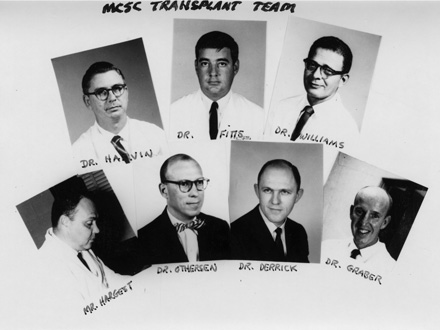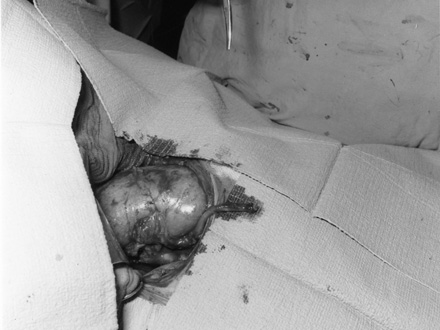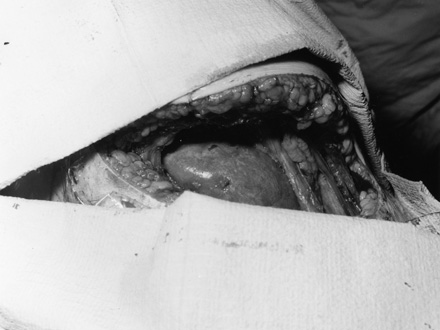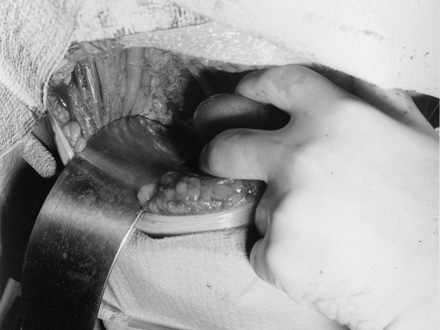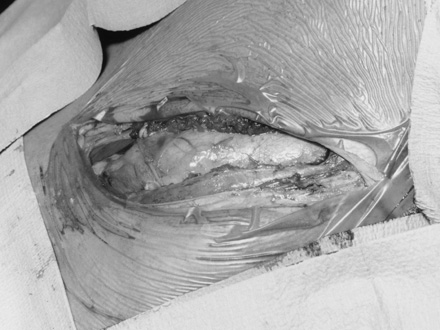The Operation
At 8 am on the morning of the surgery, while his family gathered in the waiting room, Mrs. Madden and Mr. Ashley were brought to adjoining operating rooms where two teams of surgeons got to work.
First, urologist Dr. Fletcher C. Derrick, Jr. removed Velma Jean Madden’s healthy right kidney. The kidney was then given to Dr. H. Biemann Othersen, Jr. and Lloyd L. Martin for cleaning and flushing. Dr. Othersen passed the kidney to Drs. C. Thomas Fitts and James S. Harvin who connected the kidney arteries and veins in William Ashley’s body. Dr. Derrick then attached the ureter connections to Ashley’s bladder. The surgery lasted four and a half hours.
What made this relatively straightforward operation unique and the first of its kind was the use of lymphocyte depletion as the principle pre-operative measure against organ rejection. No anti-serum or drugs were used before or during the transplant. In previous operations, drugs had been used to suppress the body’s immune system to prevent the rejection reaction or an anti-lymphocyte serum was used to suppress the lymphocyte count. During lymphocyte depletion in this case, only the lymphocytes were removed and the patient’s other immunological defenses were preserved to help the body fight off infection.
In the months leading up to the transplant, both of Mr. Ashley’s diseased kidneys were removed and for thirty-five days, doctors drained his lymph fluids through a catheter which had been inserted into his thoracic duct. The lymphocytes, which were removed during this process, were destroyed and the purified lymph fluid was returned to his body. It was thought that by depleting his lymphocytes Mr. Ashley’s immune system would be unable to attack and reject the foreign organ. However, because his immune system was only selectively depressed he still had enough defenses to protect against infection.
During the depletion process an anti-lymphocyte globulin was made from the Mr. Ashley’s own lymphocytes and after the surgery it was administered to supplement the anti-rejection process.

